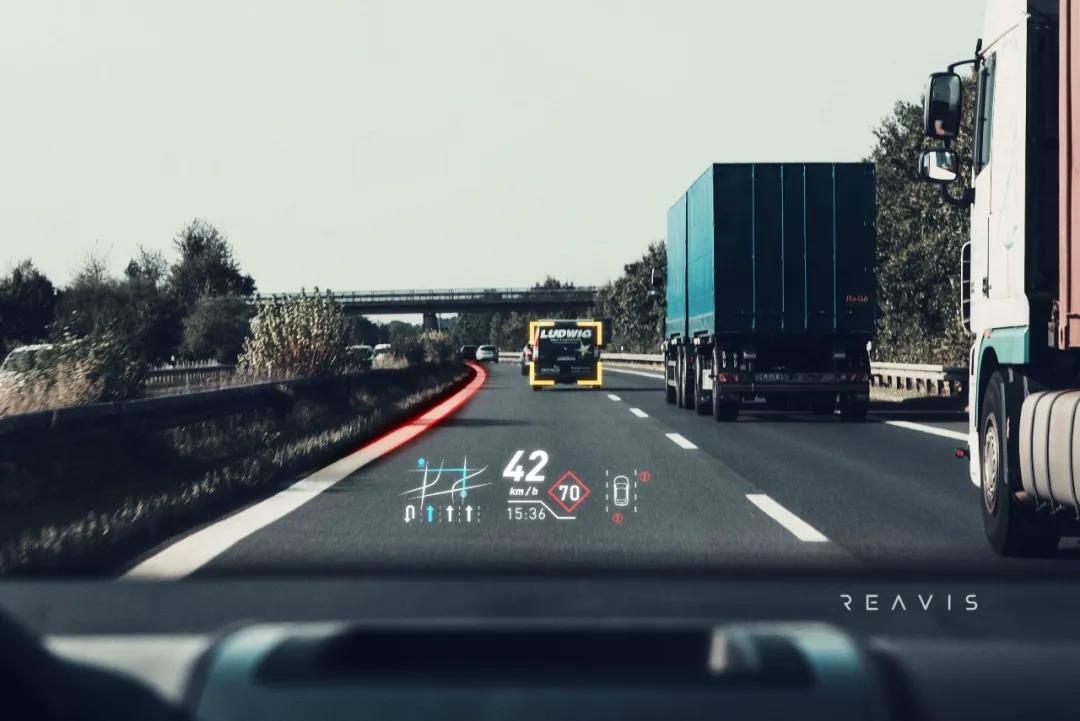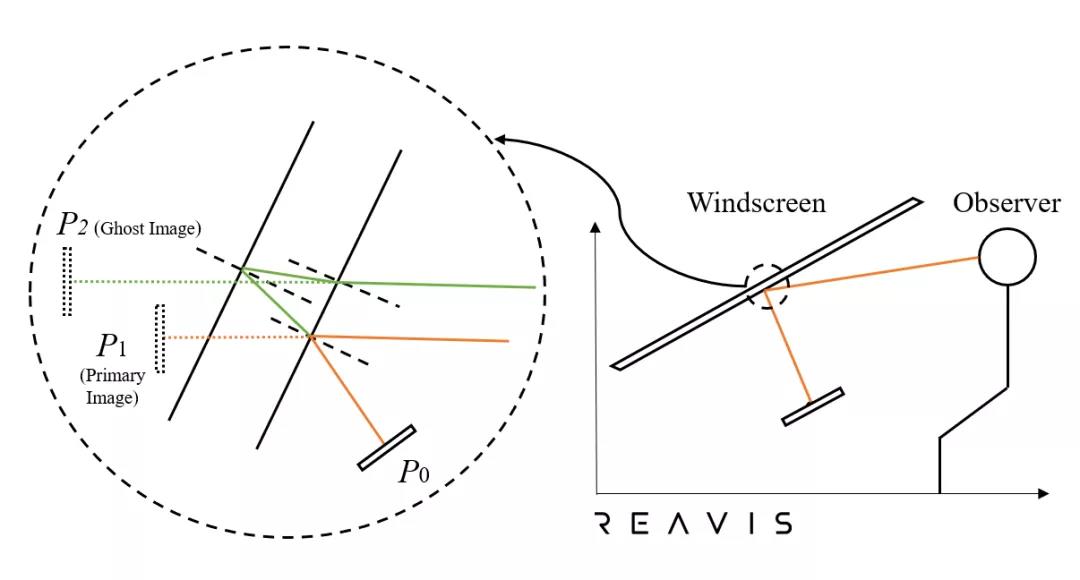ReaVis was originally founded in 2018 in Cambridge, UK. The company's headquarters is now located in Nanjing, with a research center in Cambridge, UK, and an office in Shenzhen. The company focuses on providing leading AR display technology, integrating real scenes with intelligent views to create the next generation of human-machine interaction systems. ReaVis's core technology has a wide range of applications, such as vehicle head-up display systems, window displays, stage holographic displays, showcase displays, and building augmented reality displays. At the current stage, the company is focused on the research and production of next-generation vehicle head-up display (HUD) systems. HUD is a display technology that projects virtual images of driving information (such as driving and navigation information) onto the windshield in front of the driver's line of sight. HUD can effectively improve driving safety and intelligence, making it an important component of smart cabins and a crucial prerequisite for future vehicles to become human-machine interaction terminals.

HUD products can be divided into C-HUD, W-HUD, and AR-HUD. C-HUD integrates virtual images with real scenes using a combination of plastics or glass. Most C-HUD products are aftermarket products, meaning they are ready to use immediately. C-HUD has a low technical barrier, and the industry has entered a stage of low-profit competition. W-HUD directly uses the windshield as the interface between virtual images and real scenes. W-HUD is a factory-installed product, and traditional W-HUDs require customized design for each vehicle model, as well as cooperation from OEMs to customize special windshields to solve ghosting issues. AR-HUD, based on W-HUD technology, combined with sensing and communication technologies, can achieve a larger Field of View (FOV) and depth display, seamlessly integrating virtual images with real scenes, which is the direction in which HUD manufacturers are heading.
As the level of automobile intelligence increases, the HUD market will experience rapid growth. In 2020, the global HUD penetration rate was close to 10%, while China's HUD penetration rate was only around 3%, far below the global average. According to calculations by Dongfang Securities, by 2025, China's HUD penetration rate will exceed 30%, with a market size of nearly 20 billion yuan and a compound annual growth rate of over 40% in five years. According to data from Changjiang Securities in August 2020, 780 models from 205 vehicle series in China are equipped with HUD (including optional and standard). Currently, HUD is mainly found in luxury cars such as BMW, Mercedes-Benz, and Audi, as well as Japanese cars, with most products being W-HUD and optional. With the advancement of HUD technology, there is a trend from foreign brands to domestic brands, from luxury cars to mid-range cars, from optional to standard equipment, and from W-HUD to AR-HUD.
The low penetration rate of HUD is due to various factors, including high costs, limited installation space, and the need for improvement in AR display effects. Due to the thickness of the windshield, images undergo two reflections on the inner and outer glass planes, resulting in ghosting. The current common solution is to eliminate ghosting by inserting a custom wedge-shaped film between the windshield layers. This solution requires car manufacturers to customize windshields for each HUD-equipped model, increasing the cost of installing HUD and greatly restricting its applicable scenarios, limiting its popularity.
![]()

ReaVis proposed and implemented the Ghost Image Free (GIF) no-ghosting projection technology based on ordinary windshields in 2018. This technology can achieve ghost-free projection from 2m to infinity with different types of optical machines (such as TFT, DLP, LCOS, and LBS) and has applied for two international PCT patents. At the same time, based on core technology, ReaVis is also developing a new HUD system architecture to standardize HUD products, significantly reducing HUD costs and shortening development cycles, promoting the standardization process of HUD.
Another core technology of ReaVis is 3D display. Existing AR-HUD products can only achieve fixed-distance 2D image display, which to some extent limits the AR display effect. At the same time, drivers may experience dizziness due to difficulty in natural focusing, leading to a decrease in driving experience. The ReaVis team has been conducting research and development of 3D AR-HUD for many years and is currently focusing on the development and mass production of 3D AR-HUD display technology with multi-layer depth information and Digital Holography digital holographic 3D AR-HUD display technology to accelerate the iteration and maturity of AR-HUD technology.
ReaVis is steadily advancing the development of multiple pre-research products and the production of mass-produced products, and has cooperated with many domestic and foreign OEMs. Dr. Deng Yuanbo, CEO of ReaVis, told 36Kr that at this stage, ReaVis hopes to enhance the universality, functionality, and viewing comfort of HUD technology through principle innovation, thereby promoting the development and iteration of HUD technology. While maintaining a leading position in HUD technology, continue to develop other new types of vehicle display products and further explore the application of AR and intelligent displays in more fields.
The core R&D team of ReaVis comes from the University of Cambridge. Dr. Deng Yuanbo, CEO, graduated from Zhejiang University with a bachelor's degree in optoelectronics. He conducted research in holography, AR, and 3D display directions at the Advanced Optoelectronics Center of the University of Cambridge during his master's, doctoral, and postdoctoral stages. Dr. Dong Daoming, CTO, is responsible for hardware and algorithm development and previously worked at Apple and the global leading holographic display company VividQ. Professor Chu Daping, Chief Scientist, is the director of the Advanced Optoelectronics Center at the University of Cambridge and a senior expert in the field of optoelectronic displays, enjoying high academic status internationally. In addition, there are several senior engineers and experts in the industry with experience in HUD projects.
Investment perspective: Regarding this investment, Huang Songyan, Managing Director of Linear Capital, said: "Automobile intelligence has always been a focus of Linear Capital's attention. Linear Capital is willing to lead the investment in ReaVis in the first round and support the long-term development of ReaVis. As the penetration of intelligence in the automotive field rapidly increases, the role of head-up display (HUD) is gradually being magnified. ReaVis's globally pioneering wedgeless HUD optical path scheme can significantly reduce the cost of using HUD. At the same time, ReaVis's new AR-HUD architecture can achieve true 3D display with depth information, which can greatly improve display effects and has obvious intergenerational advantages compared to other solutions on the market."